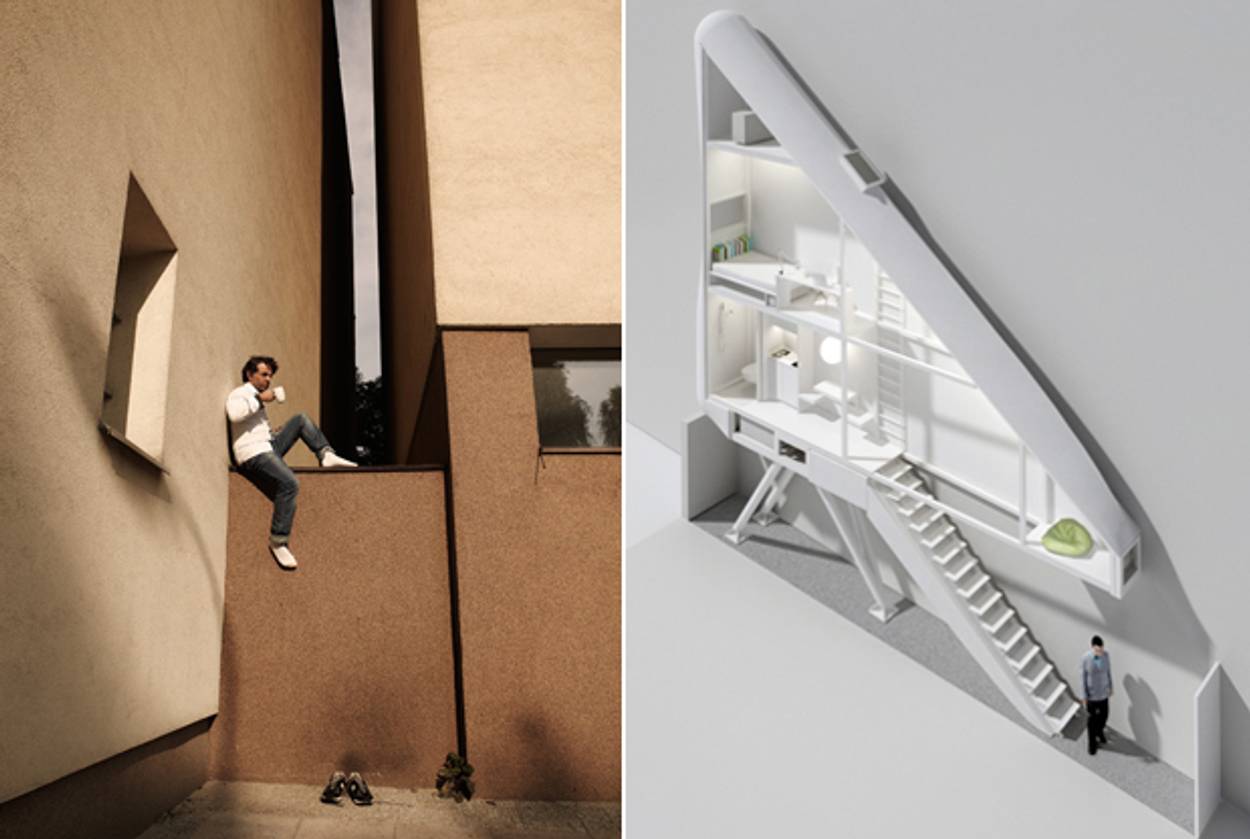A New House in the Old Country
An architect built me a house in Warsaw—coincidentally right where my mother risked her life to save her family




In another few hours, I’ll be boarding a plane from Tel Aviv to Warsaw, and the truth is that I’m very excited. Not about the flight, and certainly not about Warsaw. After all, I’ve been in that city at least a dozen times. I’m excited because this time, I’m not going there as a tourist or a writer promoting his book. This time, I’m going to my home.
True, that home isn’t really very wide. It’s actually very narrow, apparently the narrowest home in the world, but still, even a 122-centimeter-wide home is still a home. And I’m very excited because my family hasn’t had a home in Warsaw for more than 70 years.
My mother was born in Warsaw in 1934. When the war broke out, she and her family ended up in the ghetto. As a child, she found ways to support her parents and baby brother. Children could escape from the ghetto and then smuggle in food through openings too small for adults. During the war, she lost her mother and little brother. Then she lost her father, too, and was left completely alone in the world.
She once told me, many years ago, that after her mother died, she told her father that she didn’t want to fight anymore, that she didn’t care if she died, too. Her father told her that she must not die, that she had to survive. “The Nazis,” he said, “want to erase our family name from the land, and you’re the only one who can keep it alive. It is your mission to get through the war and make sure that our name survives. So that everyone who walks down the streets of Warsaw knows it.” Not long after that, he died. When the war ended, my mother was sent to an orphanage in Poland, then to one in France, and from there to Israel. By surviving, she fulfilled her father’s request. She kept the family and their name alive.
When my books began to appear in translation, the two countries in which I became successful as a writer were, somewhat surprisingly, Poland and Germany. Later, conforming perfectly to my mother’s biography, they were joined by France. My mother never went back to Poland, but my success in her native land has been very important to her, even more important than my success in Israel. I remember that after reading my first collection in Polish translation, she said to me, “You’re not an Israeli writer at all. You’re an expatriate Polish writer.” And if all that is true, then in another few hours, I’ll be going home. It’s a narrow home, and I’ll only stay in it for a few days, but hanging on the front door is a huge sign that says The Keret Home, and when I get there, I’ll call my mother and tell her that I’m home.
The idea was to build a house with the same proportions as my stories: as minimalist and as small as possible.
Here’s how this happened: Three years ago, Jakub Sazczesny, a Polish architect, called me and tried to explain by phone that he wanted to build a home for me in Warsaw, the narrowest home in the world. At the time, I thought his crazy idea, along with his heavily Polish-accented English, which made our conversation comical, had to be a practical joke engineered by one of my friends. A few weeks later, Jakub arrived in Israel, and when I met him face to face, I realized that he was totally serious. The idea was to build a house with the same proportions as my stories: as minimalist and as small as possible. When Jakub first saw the unused space between two houses at 22 Chlodna Street, he decided that he had to build something there. When we met, he showed me the building plans for a narrow, three-story house.
After the meeting with him, I took a computer-simulated picture of the house and showed it to my mother. To my surprise, she recognized the street immediately: the narrow home would be built, totally by accident, on the spot where a bridge had linked the small ghetto to the larger one. When my mother smuggled in food for her parents, she had to get past a barricade there, manned by Nazi soldiers. She knew that if she were caught carrying a loaf of bread, they’d kill her right there. And now, 72 years later, we’ll have a home on that spot. A pushy little home: In the picture it looks almost as if history hadn’t left room for it, but it still squeezed itself in, as if to say: A family once lived in this city. They’re not here anymore, but everyone who walks past me will have to stop for a minute and look at my narrow, defiant body, look at the sign and remember that family’s name.
Translated by Sondra Silverston
***
Like this article? Sign up for our Daily Digest to get Tablet Magazine’s new content in your inbox each morning.
Etgar Keret is a Tel Aviv-based filmmaker and fiction writer. He writes a regular column from Israel for Tablet.
Etgar Keret is a Tel Aviv-based filmmaker and fiction writer.